#3 Believing vs. Blindly Following
Can you learn without surrender?
After my failed attempt at implementing Karma-Yoga (working for the sake of work and not for its fruit) during a harmless Badminton game, disappointment embraced me. The abysmal sense of failure was pulling me down the rabbit-hole of guilt until I remembered a quote from Buddha,
“Do not believe in anything (simply) because you have heard it ; Do not believe in traditions, because they been handed down for many generations ; Do not believe in anything, because it is spoken and rumoured by many ; Do not believe in anything simply because it is found written in your religious books ; But after observation and analysis, when you find that anything agrees with reason and is conducive to the good and benefit of one and all, then accept it and live up to it.”
This made me question: Why was I feeling bad about my spiritual aptitude over a poem? Yes, the Bhagwad Gita, is an age-old poem in its true essence. It has been believed to be the source of philosophical wisdom and also the path to enlightenment. But it wasn’t really working for me. So, should I? Dare I? Could I dethrone the book from the pedestal and look at it what for it is? Was it possible for me to undo the wirings of my brain, remove the sacred text from the sacred spot and read it as an alien who has just arrived on planet Earth? Ok, then what is the Gita? Funnily enough, I had no knowledge of its true origins, how many times it had been translated, the variations, the authenticity of the version I had and there I was, blindly following some words because they were presented as the answers.
Wearing my skeptical glasses, I found out some amazing facts about its origins :
Authorship
Who wrote this beauty after all?
Option 1 - Veda-Vyasa
Option 2 - Veda-Vyasa narrated it while the elephant-headed deity Ganesha broke one of his tusks and wrote it down along with the Mahabharata
Option 3 - Shankaracharya wrote it and foisted it in the Mahabharata
Option 4 - It may be the work of many authors
Ok, so the book I was struggling hard to live by had ambiguous authorship.
Date
Assumption 1: Bhagwad Gita is an independent text later incorporated in Mahabharata
Option 1 - 200 BCE (as per the Hinduism scholar Jeaneane Fowler)
Option 2 - 400 BCE (as cited in Dharmasutra texts)
Option 3 - 300 BCE (after semi-legendary life of Ashoka)
Option 4 - Orally transferred till 100 BCE and first written version around 300CE.
Assumption 2: Bhagwad Gita was a part of the early version of Mahabharata, the dating of the Gita is thus dependent on the uncertain dating of the Mahabharata.
Option 1 - The Mahabharata – the world's longest poem – is itself a text that was likely written and compiled over several hundred years, one dated between 400 BCE or a little earlier, and 2nd century CE, though some claim a few parts can be put as late as 400 CE.
Therefore, the actual dates of composition of the Gita remain unresolved. Not so motivating so far, ok. Let’s dig in a bit more.
Manuscript
A few versions of chapter 6.43 of the Mahabharata state that the Gita is a text where “Krishna spoke 620 shlokas, Arjuna 57, Samjaya 67, and Dhritarashtra 1", states the Religious Studies and Gita exegesis scholar Robert Minor. This adds to 745 verses. An authentic manuscript of the Gita with 745 verses has not been found.
Adi Shankara, in his 8th-century commentary, explicitly states that the Gita has 700 verses, which was likely a deliberate declaration to prevent further insertions and changes to the Gita. Since Shankara's time, the "700 verses" has been the standard benchmark for the Bhagavad Gita.
This was actually quite an unnerving find. Forty-five verses is a lot.
What if in the end, Krishna says, “It’s all a joke, bro. Just go kill ’em!”
So how did it become so popular?
I tried to connect the dots from texts being fairly unknown when originally written to gaining popularity after Adi Shankara’s commentaries to the hymns of the Bhakti movement to the first English translation of the Gita by the Britishers to being Mahatma Gandhi’s handbook for non-violence to being Bal Gangadhar Tilak’s guide for violence to the International Society for Krishna Consciousness’s role in spreading its word to the subtle translation of Hinduism to Hindutva and to the here and now of Covid-19.
After digging my head in multiple sources, videos and books, I realised probably would have to become a Gita scholar to know it all. I was almost giving up on my quest to understand it until one day, my maid was cleaning my room and while stacking my novels she saw the Bhagwad Gita. My maid, who is illiterate, instantly recognised it by the cover and asked me, starry-eyed, “Do you read the Gita?”
I was surprised by her awe and uttered, ‘I try.’
Being a devout follower of Lord Krishna, she said, “People say if you read the Gita, then you’ll definitely find God. Can you read something to me from it?”
I was amazed by the kind of influence this book had. There she was, a woman with immense grit who’d never been to school, had migrated from a small village in Bengal to the city, trying to get her daughters through school by working twelve hours a day because her lazy husband would just lie at home. And she was starving for a verse from the Gita. How did we get here? What happened during the course of those two-thousand years that a poem from an unknown author from an unknown date with incomplete verses written originally in a language which no one speaks today has had such a vast impact?
And then it hit me. People are deeply attached to their Gods who teach them detachment and I was no exception. Every time, I picked up the Gita, I did it with a reverence that melted my heart. Every time I read a verse by Krishna, the words were by default spoken from an authority in my head. The voice I imagined him to be was gently commanding a truth and I’d gulp down my questions and concerns because he is the God and I’m the dumb disciple who couldn’t get it. But this supposed devotion you’re expected to have when reading the Holy text became a hurdle in my path to learning until I asked myself is it genuinely the verses of the poem or am I acting in a predictable way like an impressionable person would act when marketed to correctly?
On further introspection and reading, I found out that psychologists call it the Confirmation Bias. It is the tendency to interpret information in a way that confirms one's prior beliefs which in this case could be the belief that the truth lies in the book, it’s right there, just look! But it was an astounding realisation, how beliefs are shaped, I just assumed it to be Holier than Thou because everybody said so. It made me wonder about my other beliefs, are any of them my own or am I just another socially conditioned human robot?
But at least I identified the problem: my confirmation bias was messing with my ability to interpret it. However, after looking at the facts, it became easier to strip the book of the socially imposed reverence as the Krishna in the book was simply a character of a widely popular novel by an unknown author. Of course, he might have some nuggets of wisdom for all of us or he might not. This acceptance was deeply liberating. From then on, I decided to read it afresh like the author himself had couriered the first manuscript to me.
I began reading it sincerely, implementing it, accepting the parts which worked for me and rejecting the one which didn’t. The enormous difference in interpretation this little shift in the thought process made was in itself an end to the suffering of a different kind. On a lighter note, a conversation with my demons based on real-life:
Aah well, a mind is a beautiful place.
Next One - #4 Rendezvous With God
In the series of newsletters, a lot of eccentric realisations await you. If you all as readers have different interpretations which have manifested themselves in reality, then I’d love to learn from them as well. Please share below!



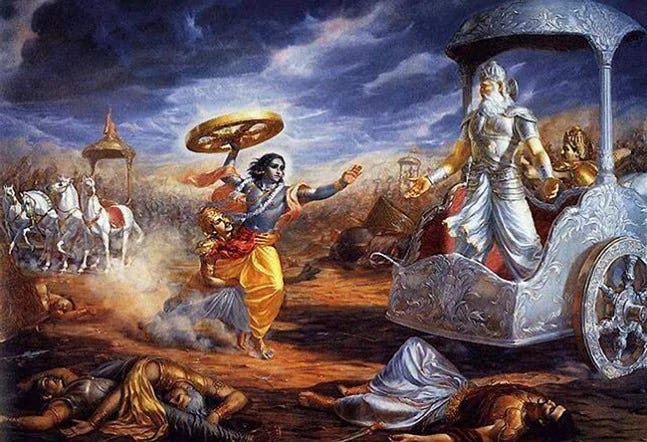
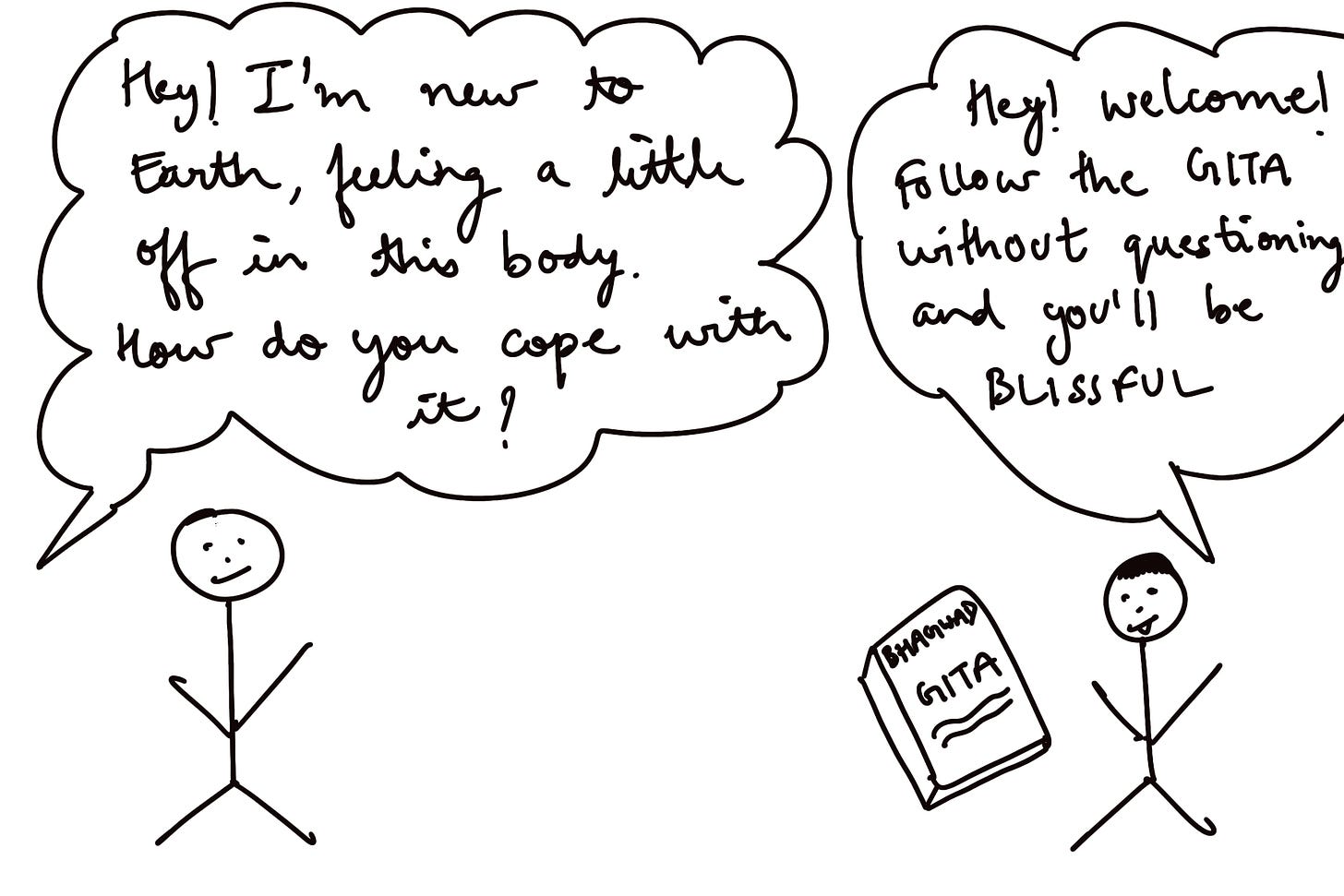
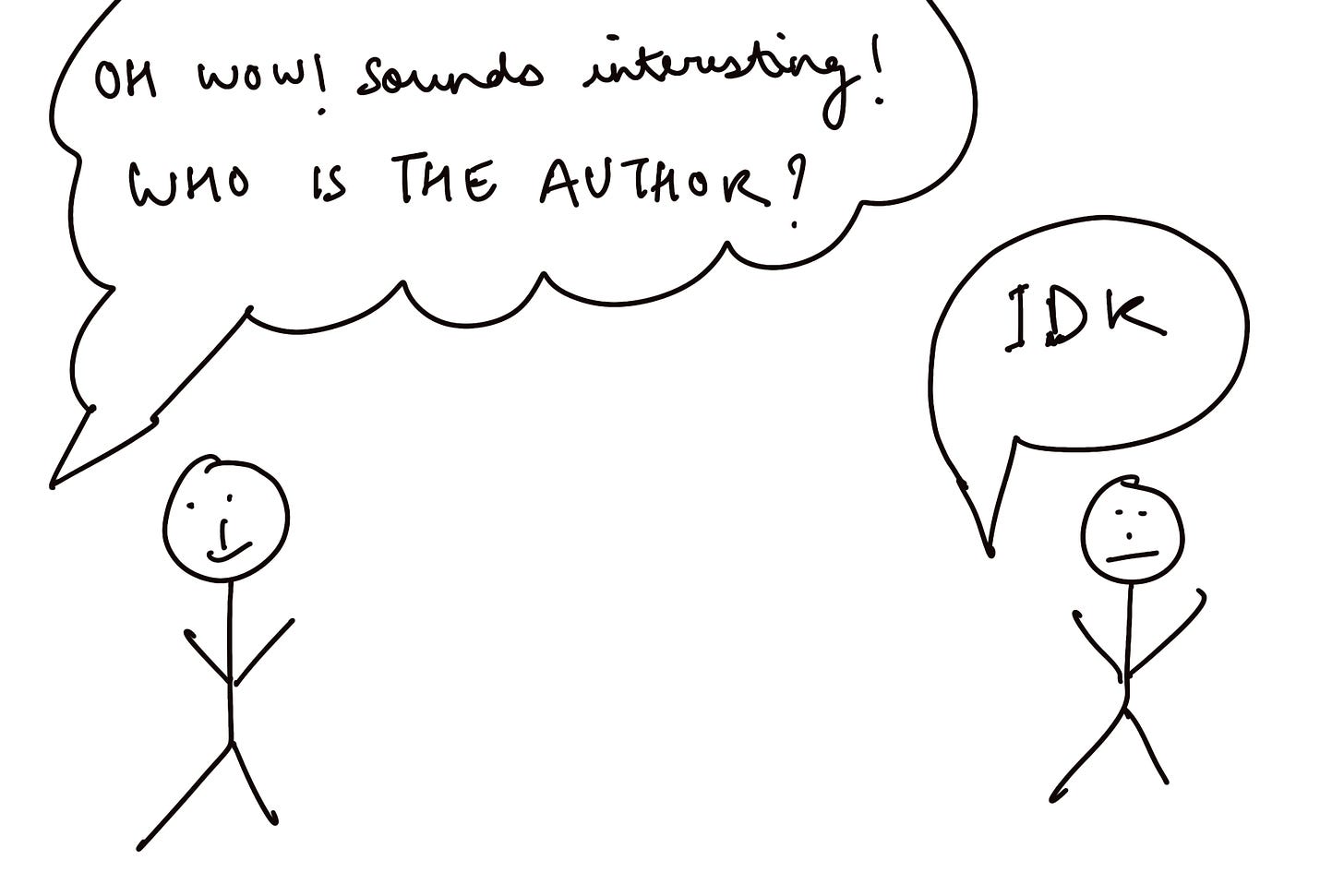
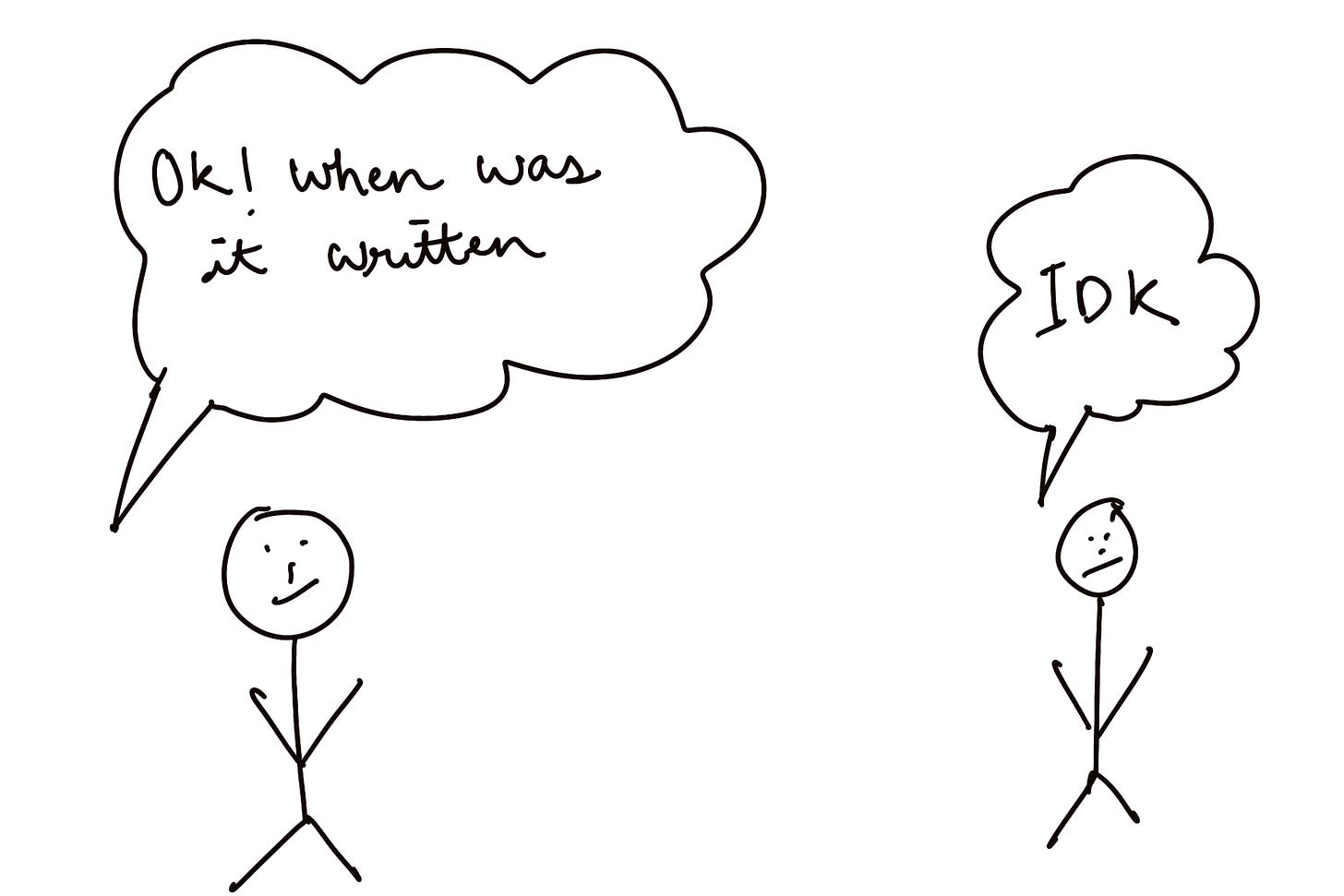


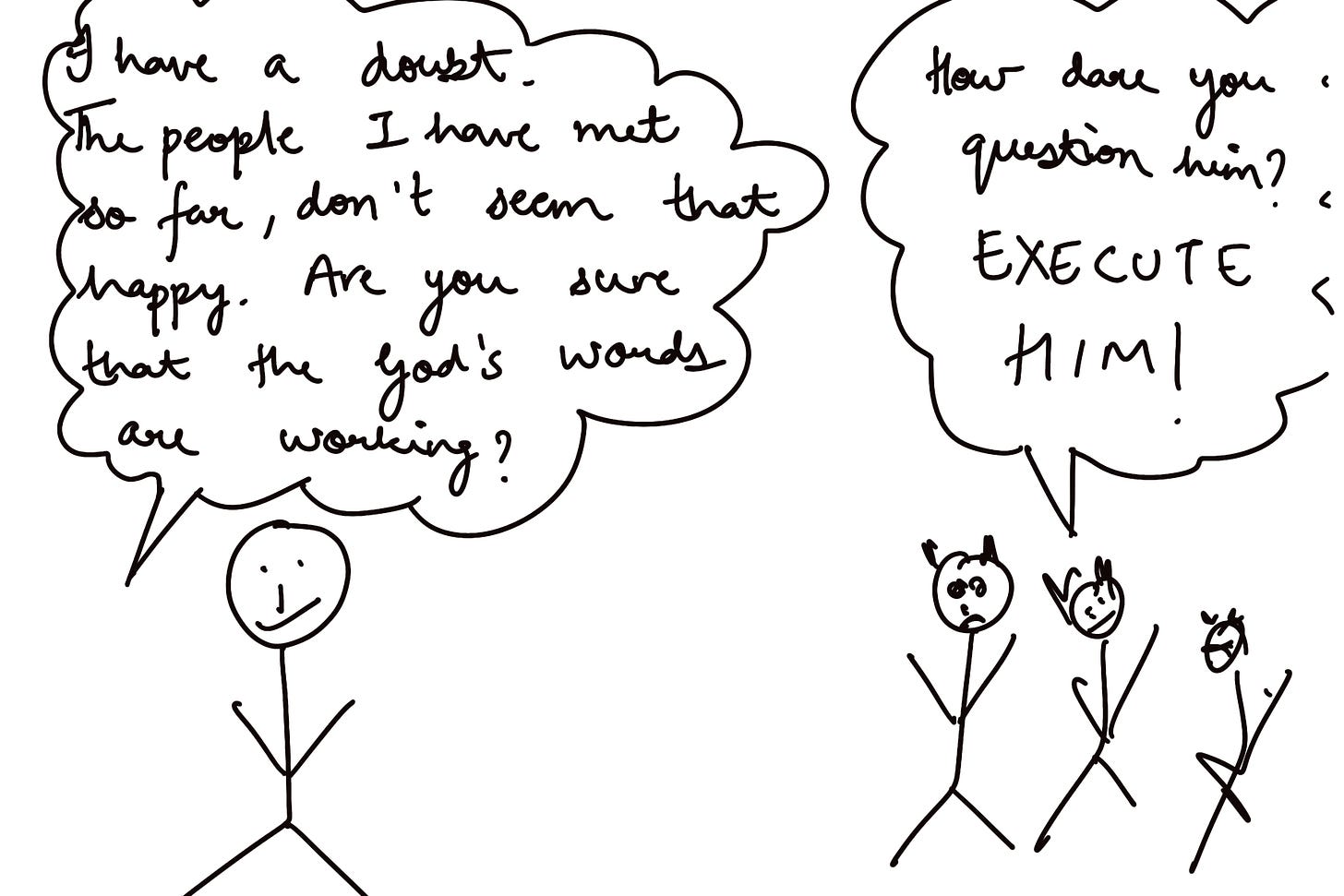
Your Gita series are totally epic!(pun intended!)
And love those demonic doodles!
Keep believing!Keep writing!Keep shining!
👍
India lacks books which critically analyses the Gita. It should be seen as any another book on Ethics and Morality.